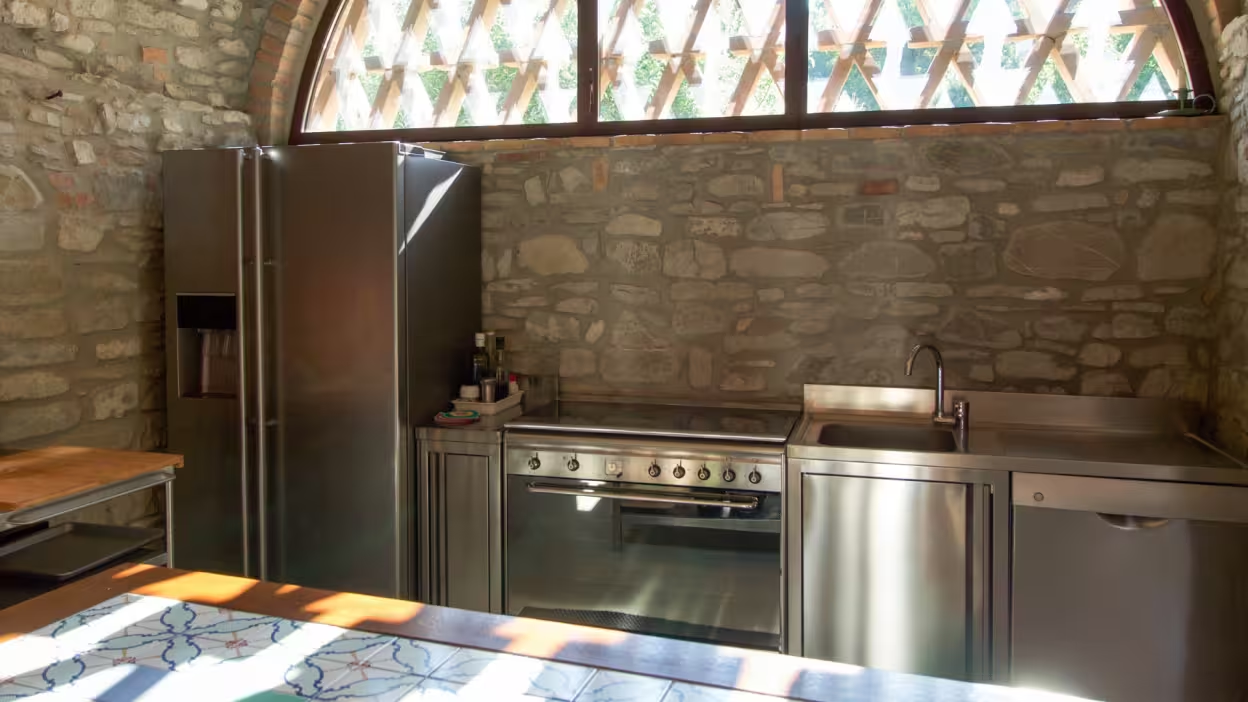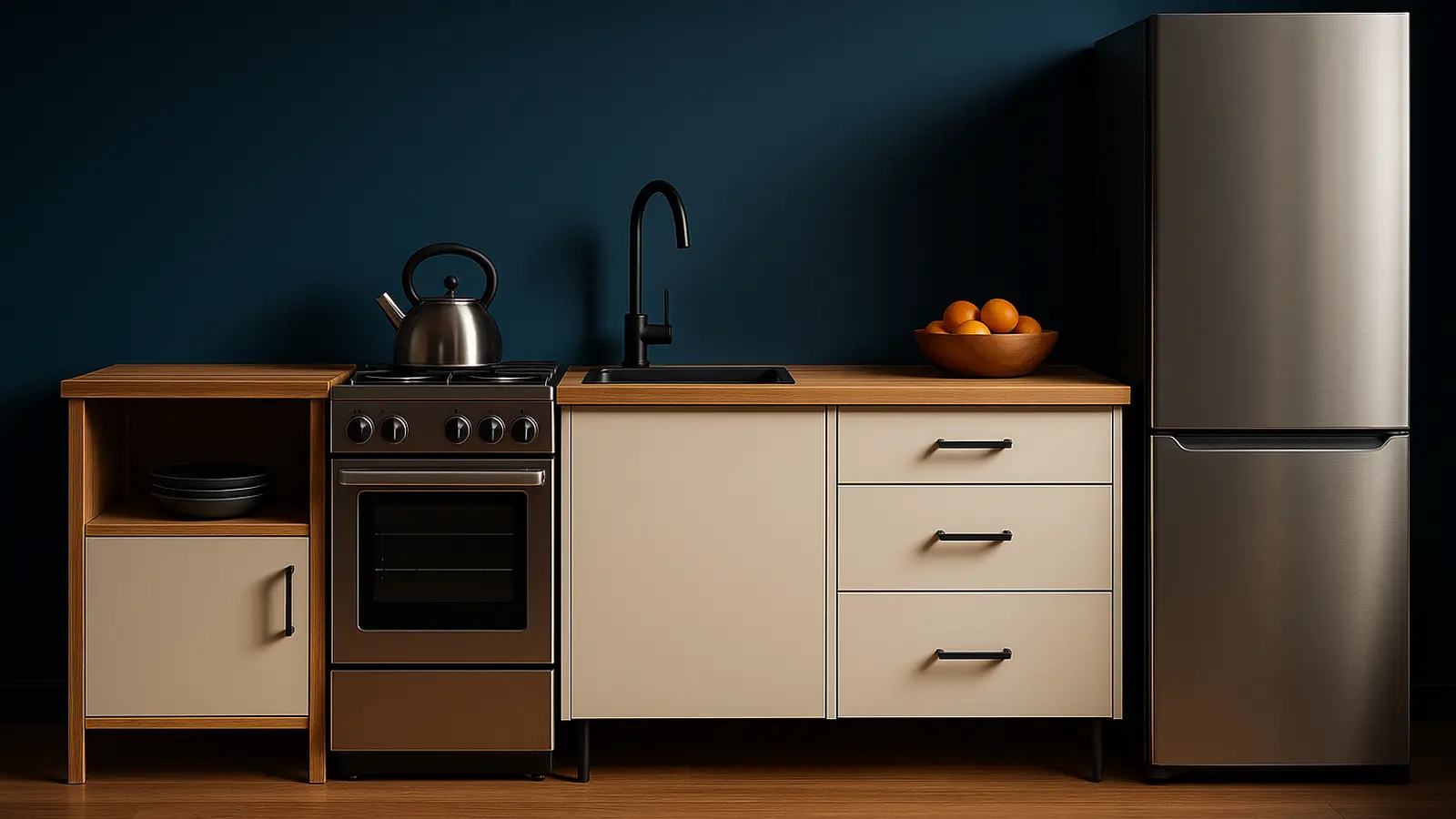6 Minutes
Rethinking kitchen design for the digital age
Kitchen renovation sticker shock is real: traditional fitted kitchens can average nearly $27,000 and sometimes soar toward $140,000. For homeowners, designers, and tech-savvy professionals looking at cost-efficiency and future-proofing, freestanding or unfitted kitchens are resurfacing as a compelling alternative. Unlike built-in systems anchored to walls and floors, freestanding kitchens are modular, mobile, and increasingly compatible with smart home technologies and IoT-driven appliances. Below are six core reasons why a freestanding kitchen often outperforms a fitted one for today’s connected lifestyles.
1. Lower upfront cost and staged investment
Affordability that scales
One of the biggest advantages of a freestanding kitchen is the ability to control spend over time. Instead of absorbing the full cost of a custom fitted install, you can start with a functional baseline and upgrade progressively. This staged investment model aligns well with modern consumption patterns: buy modular cabinetry from mainstream retailers, add premium elements later, and swap in smart appliances only when budgets or sales permit. For tech buyers, this also means you can delay capital expenditure on high-end IoT ovens or connected refrigerators until the best models with improved integrations reach the market.
2. Easier DIY installation and retrofit
Plug-and-play for builders and hobbyists
Freestanding units are typically easier to assemble and install, making them far more DIY-friendly than fitted cabinetry. Without permanent mounting to walls and floors, many elements are plug-and-play: base cabinets, islands, and freestanding ranges can be positioned and reconfigured without specialized carpentry. For projects involving smart kitchen tech, this simplifies the initial wiring and allows homeowners to prototype different appliance placements for optimal Wi-Fi, power routing, and sensor coverage before committing to permanent changes.
3. Modular upgrades and future-proofing
Upgrade one module at a time
Modularity is a key benefit for technology adoption. As new smart appliances, energy-efficient induction cooktops, or integrated water filtration systems arrive, you can replace individual modules rather than gutting the entire kitchen. This reduces waste, lowers lifecycle costs, and makes it easier to adopt the latest protocols and platforms—for example replacing a conventional oven with an oven that supports Matter or other smart home standards without having to rework cabinetry or surrounding finishes.

4. Reconfigurable layouts that optimize workflow
Design experiments made simple
Freestanding kitchens allow you to iterate on layout quickly. If traffic patterns or meal-prep workflows are suboptimal, move the island, swap a prep cabinet closer to the sink, or reorient appliance clusters to improve ergonomics. For kitchens integrating smart sensors, cameras, or voice assistants, this reconfigurability enables experimenting with sensor placement and sightlines to maximize automation reliability and voice recognition accuracy.
5. Flexibility for hybrid living and workspace integration
Multifunction spaces for modern lifestyles
Urban living and remote work trends are increasing demand for flexible, multipurpose interiors. With modular, freestanding elements you can rapidly convert part of the kitchen into a home office, dining space, or craft zone. This is particularly useful for professionals who need a hybrid environment: roll in a mobile island to act as a standing desk, then slide it back to create a full cooking area. Smart kitchen hardware and portable appliances further enable this hybridization by offering wireless controls and minimal installation requirements.
6. Easier maintenance, repairability, and sustainability
Access, cleanability, and reduced downtime
Freestanding components are easier to move for cleaning, repairs, and upgrades. If a water line leaks, cabinets can be shifted to access plumbing before damage spreads. Appliances can be pulled out for bench repair or swapped for loaner units without demolition. This accessibility extends product lifecycles and supports circular-economy principles: manufacturers and service providers can offer module-level repairs, firmware updates, or hardware replacements that avoid whole-system waste.
Product features and technology integrations
What to look for when sourcing modular kitchen tech
When selecting components for a freestanding kitchen, consider interoperability and connectivity: appliances that support open protocols, cloud updates, and third-party integrations are preferable. Look for standardized power and data connections, removable Smart HMI panels, and modular ventilation solutions. Some features to prioritize include energy monitoring, remote diagnostics, OTA firmware updates, and compatibility with voice assistants and home automation hubs. These capabilities improve management, enable predictive maintenance, and support integration with home energy systems and solar inverters.
Comparisons: Freestanding vs. Built-in
Key trade-offs
Built-in kitchens score high on seamless aesthetics and often better acoustic or thermal sealing, but they come with higher cost, permanence, and retrofit friction. Freestanding kitchens trade some seamlessness for flexibility, upgradeability, and lower total cost of ownership. For technology-focused buyers, the freestanding approach reduces lock-in to a single vendor or system and makes it easier to adopt emerging standards and devices over the kitchen’s lifespan.
Use cases and market relevance
Who benefits most
Freestanding kitchens are especially relevant to urban renters, small-home owners, early adopters of kitchen tech, and retrofit-focused contractors. The modular model dovetails with demand for sustainable design, circular supply chains, and plug-and-play smart appliances. As IoT and smart-home platforms converge on interoperability standards, the market for modular, tech-ready kitchens is poised to grow, enabling new product ecosystems from appliance manufacturers, service providers, and software companies offering subscription-based features or remote diagnostics.
Conclusion: A pragmatic, tech-enabled choice
For professionals and enthusiasts in the technology space, freestanding kitchens present a pragmatic pathway to a smarter, more adaptable home. They lower barriers to entry for advanced appliances, simplify upgrades, and align with sustainable repair and reuse models. Whether you’re renovating on a budget, designing a hybrid living space, or building a platform for next-generation kitchen tech, an unfitted, modular kitchen deserves serious consideration.
Source: lifehacker


Leave a Comment